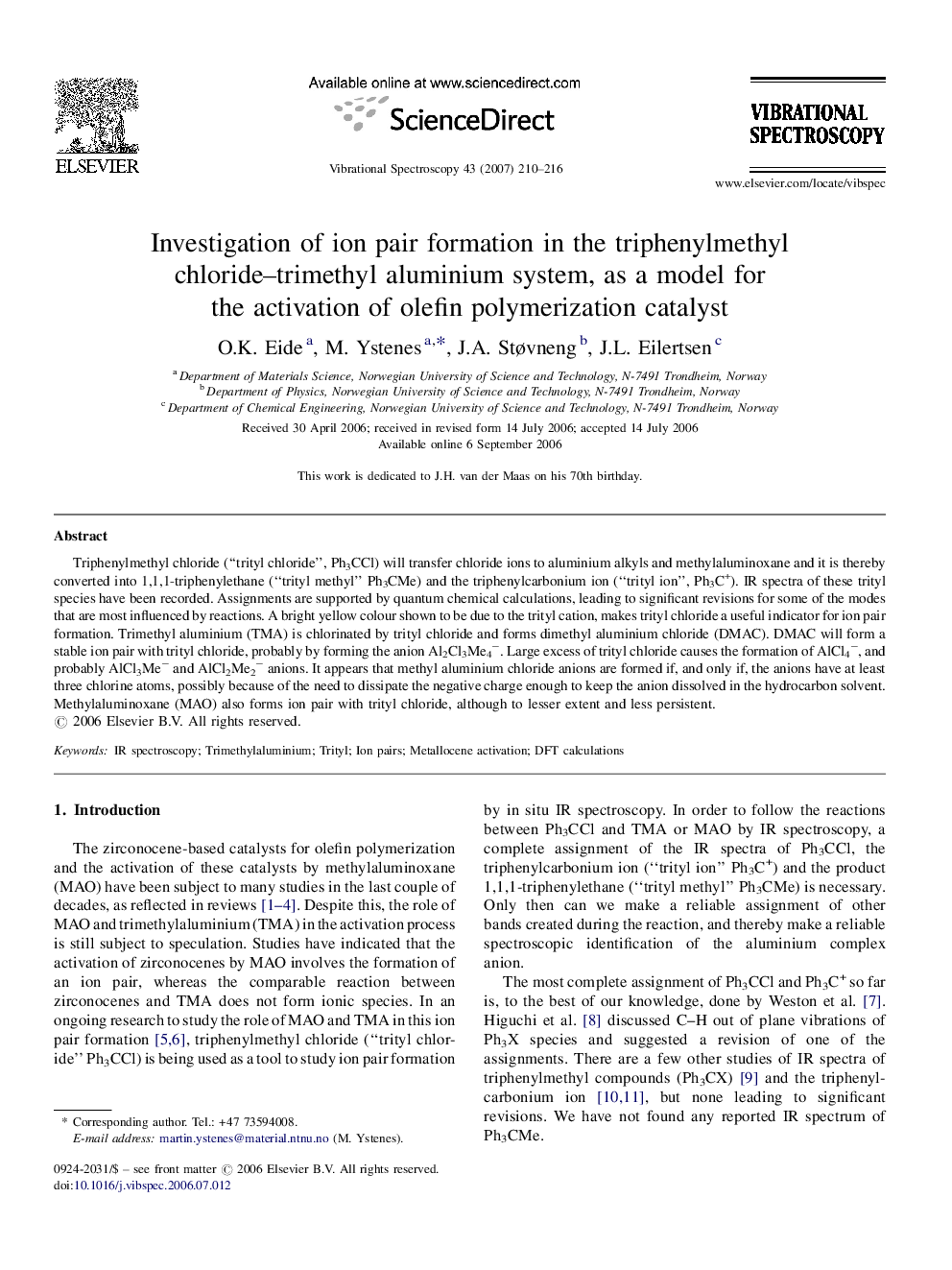| Article ID | Journal | Published Year | Pages | File Type |
|---|---|---|---|---|
| 1252330 | Vibrational Spectroscopy | 2007 | 7 Pages |
Triphenylmethyl chloride (“trityl chloride”, Ph3CCl) will transfer chloride ions to aluminium alkyls and methylaluminoxane and it is thereby converted into 1,1,1-triphenylethane (“trityl methyl” Ph3CMe) and the triphenylcarbonium ion (“trityl ion”, Ph3C+). IR spectra of these trityl species have been recorded. Assignments are supported by quantum chemical calculations, leading to significant revisions for some of the modes that are most influenced by reactions. A bright yellow colour shown to be due to the trityl cation, makes trityl chloride a useful indicator for ion pair formation. Trimethyl aluminium (TMA) is chlorinated by trityl chloride and forms dimethyl aluminium chloride (DMAC). DMAC will form a stable ion pair with trityl chloride, probably by forming the anion Al2Cl3Me4−. Large excess of trityl chloride causes the formation of AlCl4−, and probably AlCl3Me− and AlCl2Me2− anions. It appears that methyl aluminium chloride anions are formed if, and only if, the anions have at least three chlorine atoms, possibly because of the need to dissipate the negative charge enough to keep the anion dissolved in the hydrocarbon solvent. Methylaluminoxane (MAO) also forms ion pair with trityl chloride, although to lesser extent and less persistent.
